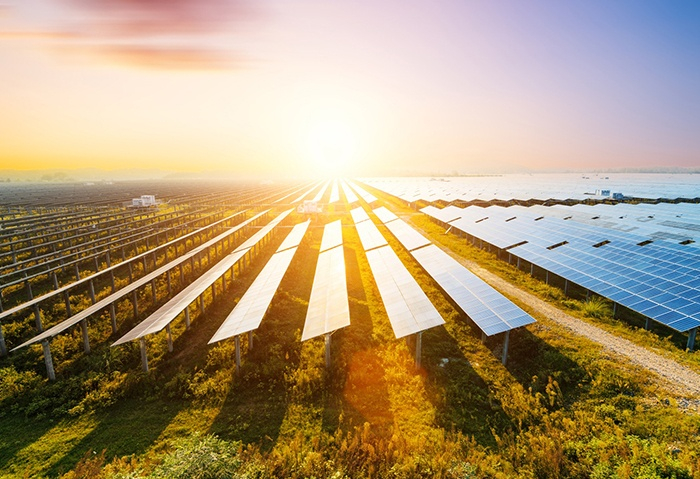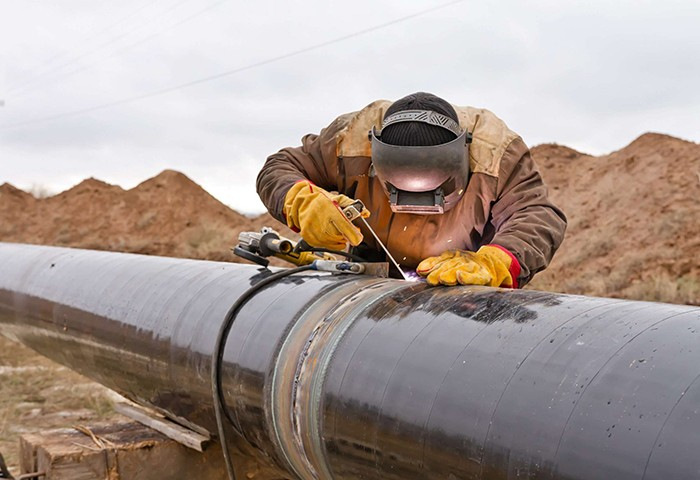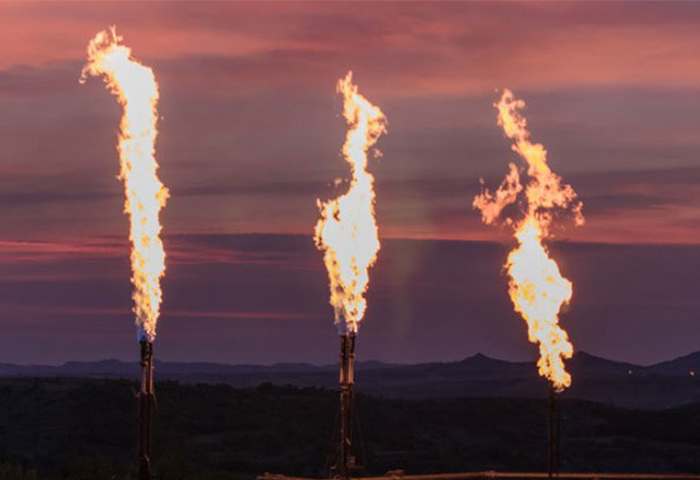This has been a dramatic year for the global energy sector, with the coronavirus pandemic slashing demand and toppling market norms. The pandemic notably came at a particularly difficult moment in Africa, exacerbating already challenging market conditions on the back of a competitive American shale industry, delaying major projects due to regulatory uncertainty, and increasing global attention to decarbonization.
As of April 28, there were 3 million confirmed cases and over 200000 deaths due to the illness. As a consequence of the efforts to slow the spread of the virus, the share of energy use that was exposed to containment measures jumped from 5% in mid-March to 50% in mid-April.
Let’s get first a quick review on 2020 before jumping to the expectations for 2021.
Demand and prices take a nosedive
Among other industries, the energy sector was dramatically affected by the outbreak of the pandemic.
According to the Paris-based International Energy Agency (IEA) report, “Global Energy Review 2020”, oil demand was hit strongly, down nearly 5% in the first quarter, mostly by curtailment in mobility and aviation, which account for nearly 60% of global oil demand. By the end of March, global road transport activity was almost 50% below the 2019 average and aviation 60% below. With industrial capacity significantly reduced due to social distancing requirements and disrupted shipments, the need for oil and other forms of energy was significantly lower.
The fall in demand, in combination with a price war between Saudi Arabia and Russia, led to a sharp fall in the price of oil. After opening the year at $66 per barrel, prices slumped to a two-decade low of $19.33 on April 21 as the virus spread around the world.
To reinforce and stabilize prices, in April members of the Organization of Petroleum Exporting Countries (OPEC), along with other oil-producing nations including Russia, Azerbaijan, Malaysia and Mexico, agreed to cut total global output by 9.7m barrels per day (bpd) – equivalent to around 10% of global production. Then, in August, the 23-nation group, known as OPEC+, decided to scale back the cuts to 7.7m bpd before announcing in early December that they would reduce production by a further 500,000 bpd as of January 2021.
It’s true that these efforts have helped oil prices recover to around $49 per barrel as of December 8, but their impact was also seen on oil companies and major oil-producing nations.
In Saudi Arabia, for example, where oil accounts for around 45% of GDP, the government implemented a series of measures to bolster finances, including the tripling of the value-added tax rate from 5% to 15%, the suspension of certain allowances for public sector workers, and spending reductions in some elements of its Vision 2030 diversification strategy.
Elsewhere, in Nigeria – which sources 10% of GDP, 57% of government revenue and 80% of its exports from oil – the government approved $5.5bn in additional loans to help fund a new budget. In Algeria, where oil makes up 90% of export revenue and funds 60% of the budget, the government announced in May that it would slash 2020 spending plans by 50%.
While the gas industry has not been as dramatically affected as the oil sector, the overall reduction in energy demand has nevertheless had an impact on major gas countries too.
The “World Energy Outlook 2020” report, released by the IEA in October, predicted that global energy investment would fall by 18.3% this year, with total energy demand declining by 5.3% and emissions dropping by 6.6%.
The report forecasts that investment in oil, coal and gas will fall by 8.5%, 6.7% and 3.3%, respectively, while investment in renewable projects is projected to increase by 0.9%.
Given the report’s findings, which include a projection model stating that renewables could meet 80% of all energy demand growth over the next decade, some have suggested that the pandemic could precipitate a dramatic shift in the global energy mix.
“I see solar becoming the new king of the world’s electricity markets. Based on today’s policy settings, it is on track to set new records for deployment every year after 2022,” said Fatih Birol, executive director of the IEA.
Despite the fall in overall energy investment, figures compiled by Moody’s showed that global sustainable bond issuance – consisting of green, social and sustainability bonds – totaled $288.2bn over the first nine months of the year, 24% higher than the corresponding period in 2019. In September Egypt launched its inaugural green bond, worth $750m – the first in the MENA region, Saudi Electricity Company, raised $1.3bn, and Qatar National Bank became the first company to issue a green bond in the country, raising $600m.
Despite the dramatic fall in fossil fuel investment, there was still some significant activity in this segment throughout the year.
In late June Abu Dhabi National Oil Company announced a $20.7bn energy infrastructure deal with a global consortium that would lease the rights to 38 gas pipelines, while in mid-May the Bahrain Petroleum Company (Bapco) pushed ahead with its $6bn Bapco Modernisation Programme, which is slated for completion by the third quarter of 2022.
Nevertheless, the transition towards renewables is likely to continue.
“It is only a matter of time before green energy will control the market; it has been increasing its supply at a much higher pace than the fossil fuel industry,” Hatem Al Mosa, CEO of the Sharjah National Oil Corporation said in June. “Green energy will capture most of the market within the next two decades.”
What’s in the view for 2021?
The African Energy Chamber has issued the African Energy Outlook 2021 report which explores the forces shaping up continent’s energy market after the historic shocks of 2020, and analyses the upcoming recovery on the back of the global energy transition and persisting market uncertainties. After a year of historic crisis, the Outlook offers guidance and solutions for African energy stakeholders to navigate troubled waters and support a strong recovery in 2021 and beyond. Pressing issues including notably the OPEC’s production cuts, ongoing regulatory reforms, the impact of the COVID-19 by region and country, and offshore drilling demand across multiple continental shelves are analyzed in detail.
“The report highlights the expected outcome of post COVID-19 mitigation strategies to the African energy sector in 2021 and beyond. It also assesses Africa’s competitiveness compared with other frontiers, and highlights the countless opportunities that continue to emerge and exist across our entire energy value chain. We look forward to this report serving as a basis for sound decisions towards a thriving energy industry in Africa,’’ said Senior-Vice President, Verner Ayukegba of the African Energy Chamber.
The African energy sector currently faces dual challenges: the COVID-19 pandemic and mounting environmental pressure has reduced investor appetite in oil and gas, while global competition has dramatically heightened over the last two decades, with investment expenditure failing to increase by the same degree. As a result, African leaders are deeply committed to maximizing FDI flows into energy production from all resources.
“The African population is set to grow substantially in the next 80 years. African leaders are cognizant of the need to increase access to reliable energy sources. Africa will not discourage energy investment of any kind, as both hydrocarbons and renewable energy are capable of filling the energy gap,” said Nicolas Bonnefoy, Partner at Asafo & Co and member of the AEC’c Advisory Board.
Despite a slowdown in the global energy market, large-scale natural gas projects have continued to advance in West and East Africa – catalyzing major gas reserves in Mozambique and Senegal – with several additional final investment decisions expected in 2021. The Outlook anticipates that low gas prices and a sustained liquefied natural gas (LNG) oversupply will drive gas monetization on the continent, further enhanced by the creation of regional synergies.
“We need regional collaboration to ensure that we take advantage of the huge opportunity presented by natural gas. Enhanced synergies between countries will allow for the creation of regional gas markets across the continent and will trigger progress in industrialization, gas-to-power and so on,” noted Nosizwe Nokwe-Macamo, Executive Chairman and Founder of Raise Africa Investments and member of the AEC’c Advisory Board.
With the Outlook proposing that better fiscal terms could unlock an additional $100 billion in investment by 2030, the role of fair, transparent and sustainable policy models was emphasized as a critical component in attracting investment at home.
“Africa’s energy will not be shaped by OPEC’s cuts or the GECF’s decisions. Africa has everything it needs to shape its own energy future and feed its population’s demand,” said Ayuk in a statement. “We need the right policies, low taxes, and proper fiscal terms in order to welcome a great influx of foreign direct investment, and build socioeconomic prosperity through our formidable natural resources.”
The world still needs oil and gas, and Africa still holds enormous untapped potential.
Ayuk believes that developing gas-to-power infrastructure will increase access to affordable energy for all sectors of the economy, offering massive knock-on benefits and making it easier to do business.
Production Outlook
According to the same report, Africa’s production outlook for the period 2020 – 2025 looks flat. Estimated 2020 liquids output from the continent is 6.92 million barrels per day (MMbbls/d) (85% crude oil). 2020 crude oil output is estimated at 5.85 MMbbls/d. As OPEC+ production sanctions on the member nations are lifted, sub-Saharan African (SSA) countries and Libya pick up liquids production, 2021 – 2022 production is expected to slightly increase to 7.5 MMbbls/d before declining to 2020 levels by 2025. Same is the case with crude oil production, where 2021 – 2022 output is estimated at a higher 6.5 MMbbls/d before declining back to 2020 levels of 5.8 MMbbls/d. The crude oil production from the SSA countries declines going into mid-2020s and rest of Africa’s production increases.
2020 natural gas production from the entire continent is estimated at close to 22.9 billion cubic feet per day (Bcf/d). This is expected to slightly increase to 24 Bcf/d in 2021 and is expected to stay flat at the same level till 2025.
The overall hydrocarbon production split between the SSA countries and rest of Africa reverses from 2020 to 2025. The SSA countries contribute to close to 55% of the overall output in 2020, while the rest of African countries are estimated to contribute to close to 55% of the production by 2025. The main reason for this is the declining production from the major producers in SSA while Libya is expected to recover from the ongoing civil war and produce a larger chunk of the overall crude production from the continent.
Drilling activity
By 2018 demand was down to 35 rig years implying a reduction of 56%. 2019 was in that respect a more promising year as demand increased towards 45 rig years representing an increase of almost 30%.
At the start of 2020 the demand was not expected to decline towards and below 2018 levels again, but the extraordinary impact of COVID-19 means that estimates for 2020 and 2021 are pointing to record low rig demand of less than 30 rig years. It is in particular floating rigs that will be impacted by lower demand versus the 2019 actuals.
However, from 2022 onwards the expectation is for rig demand to rebound slightly as drilling program associated with projects currently under development are imitated and a higher oil price expectation help revive exploration activity.
Renewables
The IEA forecast expects new PV installations to see a partial rebound in 2021, owing to utility-scale projects that return to 2019 addition levels, while distributed PV is hit more severely and does not fully recover. Onshore wind installations are also affected by commissioning delays, although they are mostly compensated for in 2021 as the majority of projects in the pipeline are already financed and under construction. However, forecast uncertainty remains for projects that were planning to achieve financial close in 2020 and become operational next year. The commissioning of two mega hydropower projects in China in 2021 supports the overall rebound of renewables.









